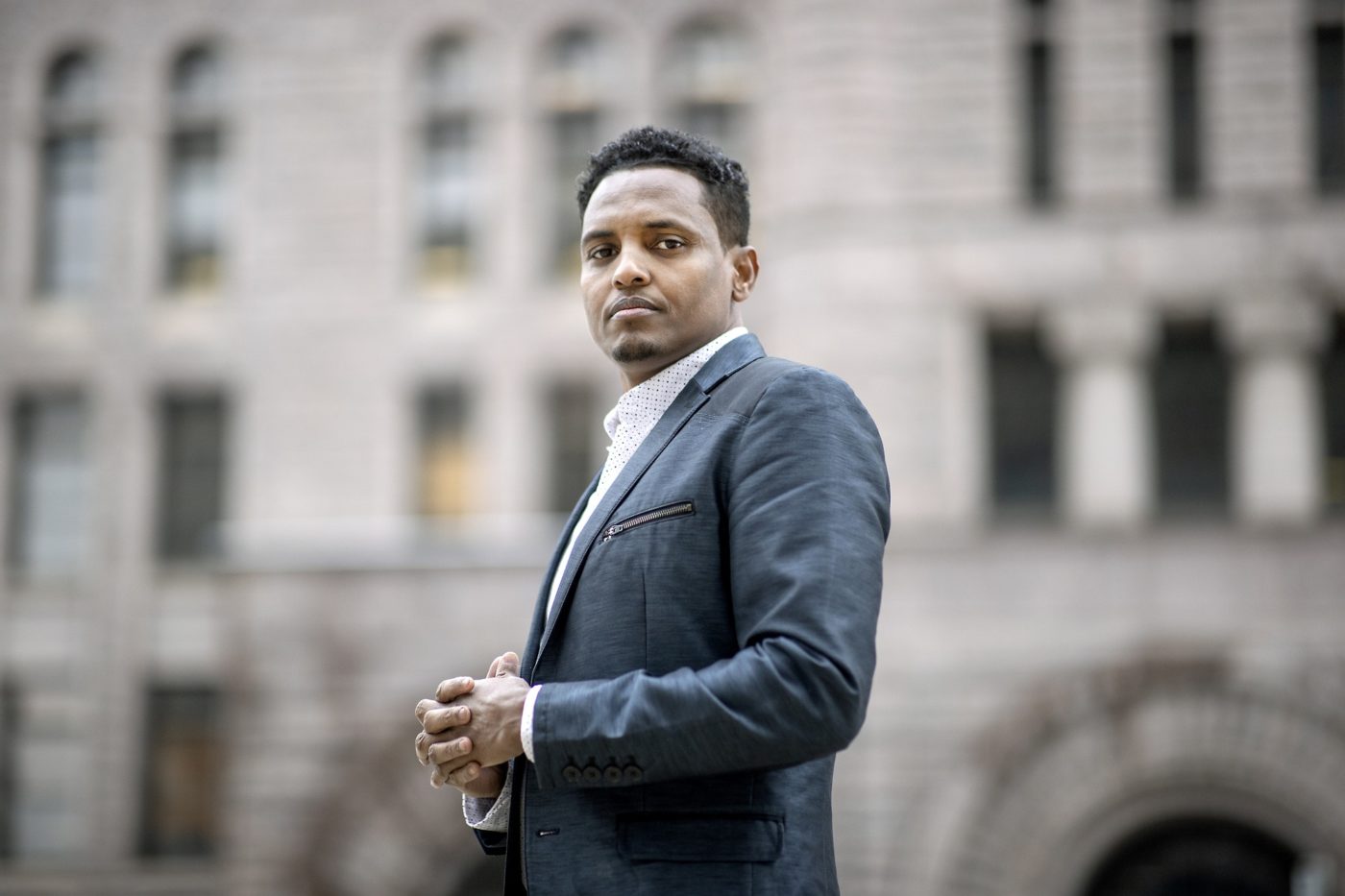Minneapolis Ward 6 City Council Candidate’s Stances on Transit, Biking, Walking, and Rolling
Pictured: Jamal Osman
Move Minnesota and Our Streets Minneapolis have teamed up on a questionnaire for 2021 Minneapolis city council candidates to learn about their ideas and vision for the future of transportation in Minneapolis.
Access to quality transit, biking, walking, and rolling play an essential role in tackling climate change and ensuring equitable access to the opportunities and services the people of Minneapolis need to live healthy and fulfilling lives.
This questionnaire is for candidate and voter information only. Participating organizations will not be making endorsements in any Minneapolis city elections in 2021. This questionnaire was sent to all candidates, but those not listed have chosen not to respond.
Only one candidate from Ward 6 has sent the responses from the questionnaire back.
The Responses
Question 1
What is your primary mode of transportation? How often do you ride transit?
Jamal Osman:
Selected the “sometimes” option
I love using NiceRide to go around the ward and am teaching my kids to ride.
Question 2
Rethinking I-94 & Environmental Justice: Climate change and pollution disproportionately affect Black, Indigenous, and People of Color. Children in North Minneapolis—particularly those closest to I-94 in the 55411 & 55412 zip codes are hospitalized at rates as high as 4x compared to children in other parts of Minneapolis. During the last Minneapolis freeway reconstruction project, the city withdrew municipal consent for the I-35W reconstruction until the Minnesota Department of Transportation and the Metropolitan Council redesigned I-35W with highway Bus Rapid Transit, resulting in the Orange Line I-35W. Currently, the Minnesota Department of Transportation is exploring reconstruction efforts for I-94 going North out of the city; what role, if any, do you see the city playing in rethinking our freeways and addressing environmental injustice and pollution from freeways? Are there specific transportation or transit efforts you would pursue to achieve this?
Jamal Osman:
We need to reduce highways through our urban core. We need to remove regular traffic
lanes that have been added, demand that transit lanes be implemented, and give every
spare piece of remaining ROW back to cities to give them development, and green
space/storm water management opportunities. Simply enough, we shouldn’t give approval
to MNDOT to pursue changes on 94 without agreeing to principles like those.
Question 3
Minneapolis Transportation Action Plan: State and city studies show that we will need to reduce how much people drive (“vehicle miles traveled”) to reach established emissions-reduction goals. Transportation is the #1 source of climate change pollution in Minnesota. The Minneapolis Transportation Action Plan has highlighted changing “mode split” (the shifting of car trips to transit, biking, or walking) as a critical strategy in reaching and measuring VMT reduction and in achieving overall emission reduction goals. The city now has an ambitious “mode split goal” to shift 60% of car trips to biking, walking, and transit by 2030. Despite an increase in bike and pedestrian infrastructure investments, data from the previous decade shows that VMT numbers dropped only 2% between 2007-2016. What specific transit, biking, and walking policies and investments should the city make, if any, to achieve Transportation Action Plan mode split goals? What new or accelerated interventions, if any, do you see as appropriate for reaching VMT goals by 2050?
Jamal Osman:
We must continue to build bike amenities and facilities to continue to connect the city by
safe bike routes. It’s also important to make sure that we continue to promote development
patterns which allow and support car-lite lives. Supporting e-bikes and pedal assist bikes
can help make biking an opportunity for more commuters. Finally I think it is important to
try and build greater comfort with biking with some groups to try and get them to start
taking some trips by bike. Some immigrants, parents, and others need better access,
education, and opportunity.
Question 4
Bottineau/Blue Line Extension: This LRT project was deemed unworkable on its currently planned route on BNSF right-of-way. However, there is still substantial interest in a Bottineau project because transportation connects people to social activity, economic opportunity, educational institutions, healthy food, and critical health services. North Minneapolis has been historically underserved by transit compared to other parts of the city; however, there are also community concerns from North Minneapolis residents of displacement and gentrification surrounding the Blue Line extension project and transit-oriented development.
What policies or programs, if any, should the city implement to ensure the success of major transit investments for both current and future communities along the line?
Jamal Osman:
The city needs to help find funding to support keeping local business owners in the area
and benefiting from the transit investment. People of color hire people of color and
replacing businesses owned by locals with national chains and big rent payers just hurts
the people who live there. We must continue to find ways to support new affordable
housing, preserve existing affordable housing, and give people of color and immigrants
chances at owning and building equity in housing
Question 5
Hennepin Avenue: The City of Minneapolis is currently considering several design options for the stretch of Hennepin Avenue that runs between Lake Street and Franklin Avenue. The currently proposed design options for Hennepin Avenue include bus lanes, two-way traffic, and loading and parking zones; one option includes bike infrastructure, and the other design includes street greening.
On streets like Hennepin Avenue—which are key commercial corridors, have dense housing nearby, and have limited space to work with—what approach, if any, should the city take in balancing current and long-term needs for our transportation networks?
Jamal Osman:
We need to make sure we prioritize pedestrians on all of our major corridors. After that
the balance of what makes a corridor work is specific to the conditions on those
corridors. I’m not going to speak to Hennepin, but for instance along Franklin I think it is
important that we maintain quality bike facilities, make it safer for pedestrians, and
promote transit. People drive too fast down it and it’s an unsafe environment for it.
Reducing parking is something we should consider for the corridor to promote a place
where people can walk around. I represent one of the most walkable areas in
Minneapolis in Cedar Riverside and the community it fosters is one worth recreating
elsewhere.
Question 6
Bus Priority: Transit operations cross multiple jurisdictions of government. Metro Transit manages bus operations and service schedules. The city of Minneapolis and Hennepin County have authority over most of the streets Metro Transit Buses run through; and, the city also has control of the stoplights within city limits.
What improvements, if any, should the city be pursuing to improve speed and reliability for Minneapolis transit riders? How do you see the city, Metro Transit, and Hennepin County collaborating to improve bus service?
Jamal Osman:
We need to give busses signal priority on all streets and we need to promote transit only
lanes on major corridors.
Busses are the backbone of the transit system. We must treat them like that when we plan
our roads.
Question 7
Parking Policy: The City of Minneapolis recently eliminated parking minimums; however, the city approved both a multi-thousand Allina parking ramp and proposed a parking plan for the Roof Depot site with spots for nearly every employee or visitor to travel by car, which is not in alignment with the city’s mode shift goals as cited in the TAP.
What role do you think the city should play, if any, in reducing parking to meet mode shift goals?
Jamal Osman:
We must do more to make sure we build a city and a region that allows us to meet those
mode shift goals. In my ward Mino-Bimaadiziwin, the recent Red Lake Nation housing
project is a good example. They were designed to be as close to a car free option as possible,
but without job options available to people with the whole range of skills available close by,
folks have had to have cars to get by. Parking that is allowed now needs to be flexible for
future reuses and should be considered critically in each neighborhood.
Question 8
Traffic Enforcement: A recent article in the Star Tribune found that 78% of police searches that started as stops for moving or equipment violations from June 2019 through May 2020 were of Black or East African drivers. Also, in 2016, Our Streets Minneapolis published a report that suggests black bicyclists face greater threats of police violence than white bicyclists, especially for small infractions like failure to use a light or riding on the sidewalk.
What role should the city play, if any, in changing or maintaining how minor traffic violations are enforced? or maintaining how minor traffic violations are enforced?
Jamal Osman:
There are a lot of issues that come together in traffic enforcement and like many parts of
policing we need to figure out how to deescalate the enforcement around it. But my ward
and much of the city we’re seeing a lot of traffic violations that are making pedestrians
incredibly unsafe. Part of the response to that has to be changing our roads to make
behaviors like that harder, but we still need to figure out what enforcement looks like for
many issues with drivers and traffic.
I do support alternative methods of enforcement on things like broken tail lights, and do
not support pretext stops.
Question 9
Snow Removal: Sidewalks that are inadequately shoveled create both risks and barriers for pedestrians and transit riders. We also know that the risks and barriers aren’t experienced equally– with Minneapolis senior citizens and community members with disabilities being the most impacted by neglected sidewalks in the wintertime.
What changes, if any, would you advocate for in how our city addresses snow and ice removal from sidewalks during winter?
Jamal Osman:
This is another issue where we are going to need to pilot programs and create new
opportunities. We need to make sure that our pedestrian infrastructure is cleared from
snow. That makes taking transit easier, it makes it easier for people to walk around in
winter. But the clearing and penalties for not clearing your sidewalks can be just as
impactful on poor people, the elderly and the otherwise abled. Between youth employment
options, new infrastructure, better education, and some city service we need to find a way
to clear all our sidewalks, bus stops, and corners.
Question 10
Bike, Walk, Roll: What actions, if any, will you take to make Minneapolis better for biking, walking, and rolling by the end of your term, if you are elected?
Jamal Osman:
I’ve only got two years! 😀
In the role as a council member I think the most important work I will have is continuing
to represent the city in the Rethinking94 process. Along with CM Gordon we have been
advocating for a 94 that works for our residents, that reduces pollution, and isn’t a wall
between the neighborhoods I represent and downtown.
I will say that I think the most important thing I hope to do outside of the office is continue
to reach out to the East African community to better educate and bring them into transit
and bike/ped planning, and making sure we find ways to promote bike and transit usage
among our immigrant and refugee communities.
Thank you to the candidate for their responses to the questionnaire.
Early voting is already underway in Minnesota. For more information on how to check your voter registration, absentee voting, and early voting please visit the Minnesota Secretary of State’s website.
Be a Voter
Election Day is coming up! If you want your elected officials to reflect your values, pledge to vote on or before November 2.

